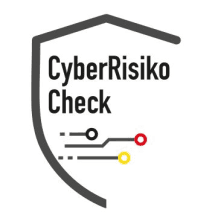Advantages and Disadvantages of External CISOs: A Guide

Share the blog with others
The Importance of a CISO
In today's digital age, the role of a Chief Information Security Officer (CISO) is crucial for the protection of company information. A CISO is responsible for developing and implementing security strategies, managing security risks, monitoring compliance requirements, and fostering a security awareness throughout the organization. This guide aims to explain the differences to you.
Benefits of External CISOs
Diverse Expertise: External CISOs bring extensive experience and different perspectives.
Cost Savings: Compared to full-time employees, external CISOs can be a cost-effective alternative.
Objectivity: As outsiders, they are free from internal dynamics and offer a neutral view on security issues.
Scalable Deployment Options: The flexibility to expand or reduce services as needed.
Looking for an external CISO? Here’s our offer: CISO-as-a-Service
Disadvantages of an External CISO
Limited Company Knowledge: External CISOs may have less insight into internal processes and culture.
Potential Security Risks: Frequent turnover of consultants can lead to security gaps.
Discontinuity in Security Strategy: Fluctuation can lead to inconsistencies.
Possible Lack of Long-term Commitment: External CISOs may be less invested in the company and its long-term goals.
Comparison: Internal vs. External
Internal CISO: Offers deep insights and a long-term perspective, but is associated with higher costs.
External CISO: Ideal for flexible and cost-effective solutions, but with potential risks regarding continuity and company understanding.
Checklist for Selecting a CISO
Industry-Specific Experience: Check for experience in your industry.
Proven Success: Look for evidence of successful projects.
Communication and Leadership Skills: A CISO must be able to communicate effectively and lead teams.
Adaptability: Ability to quickly adjust to the specific challenges of your company.
Availability: Ensure that the CISO is available when needed.
Cost-Benefit Analysis: Compare the costs with the potential value that the CISO provides.
Plan for Integrating an External CISO
Phase 1 - Involvement: Set clear goals and select the right candidate.
Phase 2 - Build and Implement: Execute security strategies and maintain ongoing communication.
Phase 3 - Succession Planning: Identify internal talent for future takeover of the role.
Conclusion
The decision to hire an external CISO should be based on a thorough analysis of the specific needs and goals of the company. A well-thought-out plan for integration and potential transition to an internal CISO is essential to meet both short-term needs and support long-term security goals.
Are you ready to take your company's security to the next level?
Contact us today to find out how we can help you find the right CISO solution for your needs.








